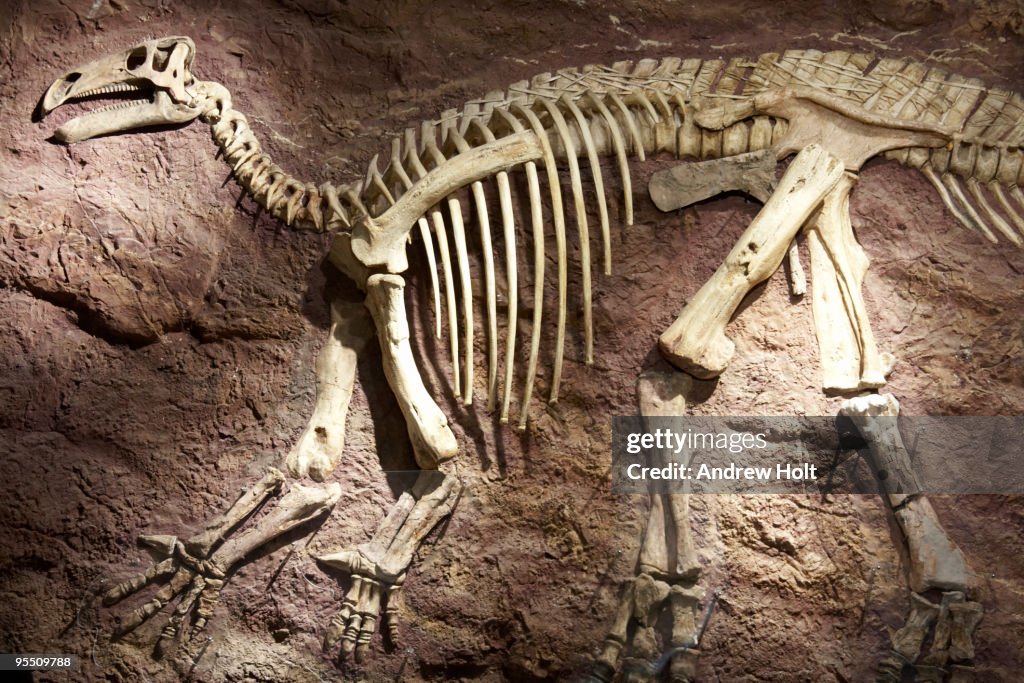
|
Getting your Trinity Audio player ready...
|
ISLE OF WIGHT, England — A bizarre new species of armored dinosaur has been unearthed on the Isle of Wight. The animal was found entombed in rocks dating back around 125 million years on the island.
The prickly-looking beast sported large, outwardly curved horns – from head to tail and belonged to a group called the ankylosaurs – plant eaters famous for their tank-like bodies and a club-shaped tail for fighting off predators and rivals.
Vectipelta barretti walked on four legs, reached up to 20 feet (6.10 m) long, weighed over two tons, and had a beaked jaw and razor-sharp teeth for chomping through rough vegetation. Vectipelta is described in a new article in the Journal of Systematic Palaeontology.
Over 20 species of dinosaurs have been dug out of the prehistoric graveyard – making it one of the richest treasure troves in Europe.
“This is an important specimen because it sheds light on ankylosaur diversity within the Wessex formation and Early Cretaceous England,” said Lead author Stuart Pond, a researcher at the Natural History Museum
Vectipelta suggests ankylosaurs were far more diverse than previously thought. It is the first armored dinosaur to be described from the Isle of Wight in 142 years.
The Isle of Wight has been dubbed ‘Dinosaur Island’. More bones have been found there than anywhere else in Europe.
“For virtually 142 years, all ankylosaur remains from the Isle of Wight have been assigned to Polacanthus foxii, a famous dinosaur from the island,” said Pond
“Now all of those finds need to be revisited because we’ve described this new species.”
Polacanthus was discovered in 1865. It lived around the same time in what is now Western Europe. The Isle of Wight was roughly where Gibraltar is now.
Vectipelta’s spikes were more blade-like. It differed in other key characteristics including neck and back vertebrae and pelvis.
The researchers drew up a family tree using genomic sequencing to work out relationships.
They discovered Vectipelta was most closely related to some Chinese cousins – suggesting dinosaurs moved freely from Asia to Europe in the Early Cretaceous.
Vectipelta would have been roaming during the Early Cretaceous, a time for which fossil remains are rare worldwide.
This has led some to suggest that a mass extinction occurred at the end of the Jurassic Era.
It makes understanding dinosaur diversity crucial to discovering if such an event occurred – and how life recovered.
With rocks from this time mostly absent in North America, the Wessex Formation and the Isle of Wight are hugely important areas in answering these questions.
At the time the Isle of Wight would have had a climate similar to that of the Mediterranean and was a flood plain covered by a large meandering river system.
Floods would have washed organic material such as plants, logs, and even dinosaur bodies together.
As waters receded this organic matter would have been isolated in ponds on the floodplain that eventually dried out and were buried in the clay soil, preserving this organic material as the fossils we find today.
Vectipelta barretti has been named after the Natural History Museum’s legendary dino hunter Professor Paul Barrett. He’s hugely influential in vertebrate paleontology, and he’s a world-leading authority on dinosaurs.
“Myself and some of the other authors on this study have been mentored or supervised by Paul for most of our careers, and it was notable to us that Paul hadn’t had a dinosaur named after him yet, said Senior author Dr. Susannah Maidment

“We really wanted to thank him for his support and mentorship, so we decided to name a slow-moving, spiky organism after him.”
Barrett has worked at the Natural History Museum for 20 years. In that time he has published an impressive 220 scientific papers.
He has also supervised 31 Ph.D. students and mentored many others, encouraging a whole new generation of paleontologists.
“I am flattered and absolutely delighted to have been recognized in this way, not least as the first paper I ever wrote was also on an armored dinosaur in the NHM collections. I’m sure that any physical resemblance is purely accidental,” said Barrett
The team is optimistic that more species will be discovered in the area in the future.
“We have new iguanodontians that we are lining up, to be prepped and to be studied. I think we have at least two new taxa in the collections. With regard to ankylosaurs, they are somewhat rarer, so I think we need to keep our eyes peeled.” said Dr. Maidment:
The new dinosaur is part of the internationally important collection held at the Dinosaur Isle Museum in Sandown.
Parts of the dinosaur will be on display at the museum for the school holidays. The bones have been cleaned from their surrounding matrix by staff and volunteers at the museum which has made the research possible.
Produced in association with SWNS Talker
Edited by Judy J. Rotich and Virginia Van Zandt
“What’s the latest with Florida Man?”
Get news, handpicked just for you, in your box.



